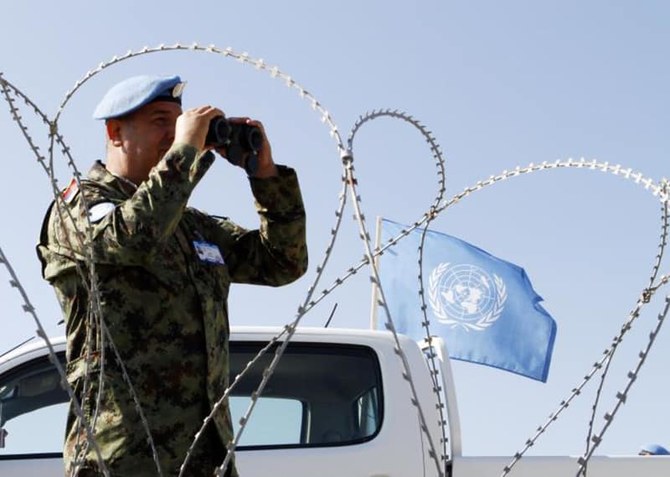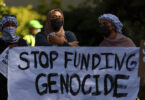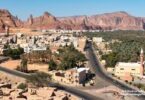Yasar Yakis
Tensions rose in Cyprus last month in the village of Pyla, on the border between the Turkish and Greek parts of the island. Pyla is inhabited by about 500 Turkish Cypriots and 850 Greek Cypriots. The origin of the conflict goes back to UN Security Council Resolution 186 of March 4, 1964, which authorized the introduction of the UN Peacekeeping Force in Cyprus, known as UNFICYP.
The hope that the two parts of the island may eventually be reunited is fading away with each passing day. Former UK Foreign Secretary Jack Straw last week wrote for Politico that a two-state solution was the only reasonable way to solve the Cyprus problem.
On Aug. 18, a tiny piece of land measuring just 2 sq. km adjacent to the village Pyla became the scene of physical clashes between the UNFICYP and Turkish Cypriot security forces. The area accommodates four different sovereign territories or claims: Turkish Cyprus, Greek Cyprus, the UN-controlled buffer zone and the British sovereign base area. Pyla was given special status because of its mixed population, thus constituting an exemplary cohabitation of the two communities. So far, there have been no major incidents that have caused intercommunal clashes in this village.
There are two Turkish Cypriot villages close by, Beyarmudu and Yigitler. Beyarmudu is connected to Pyla by a relatively good quality road, but it crosses the sovereign British base. Therefore, passengers who want to travel from Beyarmudu to Pyla have to go through checkpoints, which causes delays and congestion for two reasons. One is the number of foreign tourists who want to cross the border and visit the Turkish Cypriot side. The other is the Greek Cypriots who travel to the Turkish part of Cyprus to buy cheaper gasoline. In order to alleviate this congestion, Turkish Cypriot authorities have for decades been asking the UNFICYP for authorization to improve the road that would allow them to circumvent the British base when traveling from Beyarmudu to Pyla. This request has been rejected each time.
The area looks like a wide corridor and several dairies operate there. Most of the island’s special cheese, halloumi, which is a protected trademark for the Turkish Cypriots and a major export item, is manufactured in this corridor. The majority of the dairies are owned by Turkish Cypriots. The UNFICYP claims that this corridor is under its control and that Turkish Cypriot authorities should not be allowed to carry out construction work there. The latter contests this argument and uses the existence of a checkpoint at the end of this corridor as a sign to prove that it is part of the Turkish Cypriot-controlled zone. After the requests of the Turkish Cypriots repeatedly fell on deaf ears, they eventually decided to cut their own umbilical cord and started construction of the road from Yigitler to Pyla. The UNFICYP blocked the construction work. This is nothing but a storm in a teacup. Even if the area was a contested zone, the UNFICYP should be expected to mediate, as the improvement of the road was going to relieve a transport problem for Turkish Cypriots, Greek Cypriots and foreigners alike. This incident was blown up and physical clashes took place between the Turkish Cypriot security forces and UN peacekeepers. Some peacekeepers were taken to hospital for minor injuries and some UN cars were damaged. The UN released a statement blaming Turkish Cypriots.
It is difficult to explain why international peacekeepers could not find a conciliatory way to solve such a minor issue. At the end of the day, it was a question of improving the standard of a road that Turkish Cypriots, Greek Cypriots and foreigners could all use. Fortunately, the Pyla crisis was eased two weeks later through silent diplomacy. Colin Stewart, UN special representative for Cyprus and head of the UNFICYP, visited Tahsin Ertugruloglu, the Turkish Cypriot foreign minister. Teamwork was conducted on the basis of approved maps. It was agreed how the checkpoints would be managed once the road from Yigitler reached the village of Pyla. Their agreement will be reflected in a document that will be finalized soon. The land in this corridor will be promoted by the common accord of Turkish and Greek Cypriots. Another meeting is scheduled with the participation of the mayors and headmen of the villages.
Now enters the EU. There is another problem that may arise because of the involvement of the EU in the Cyprus conflict. During Turkiye’s military action in 1974, a belt of 180 km – going all the way from the east end of the island to the west, covering an area of 346 sq. km – was left under the jurisdiction of the UNFICYP as a buffer zone (a sort of no man’s land) between the Turkish and Greek parts of the island. After the accession of the Greek Cypriots to the EU in 2004, the EU adopted a document called “Protocol 10,” which considers the Turkish part of Cyprus as well as the buffer zone to be part of the Republic of Cyprus, but outside the scope of the “acquis communautaire.” We have to wait and see whether the thaw in relations between Turkiye and Greece will play a positive role in the improvement of relations between the Turkish and the Greek parts of Cyprus.







